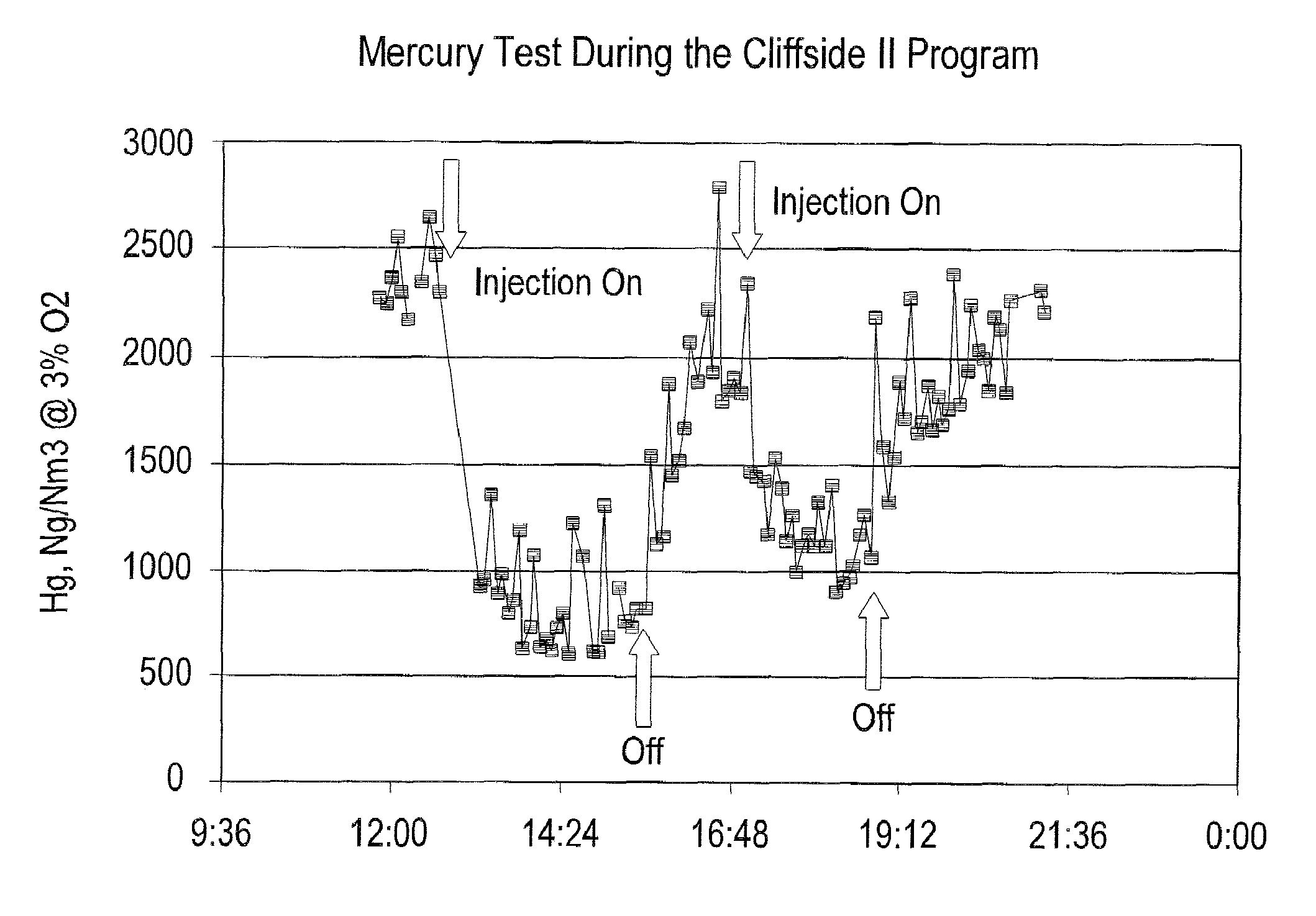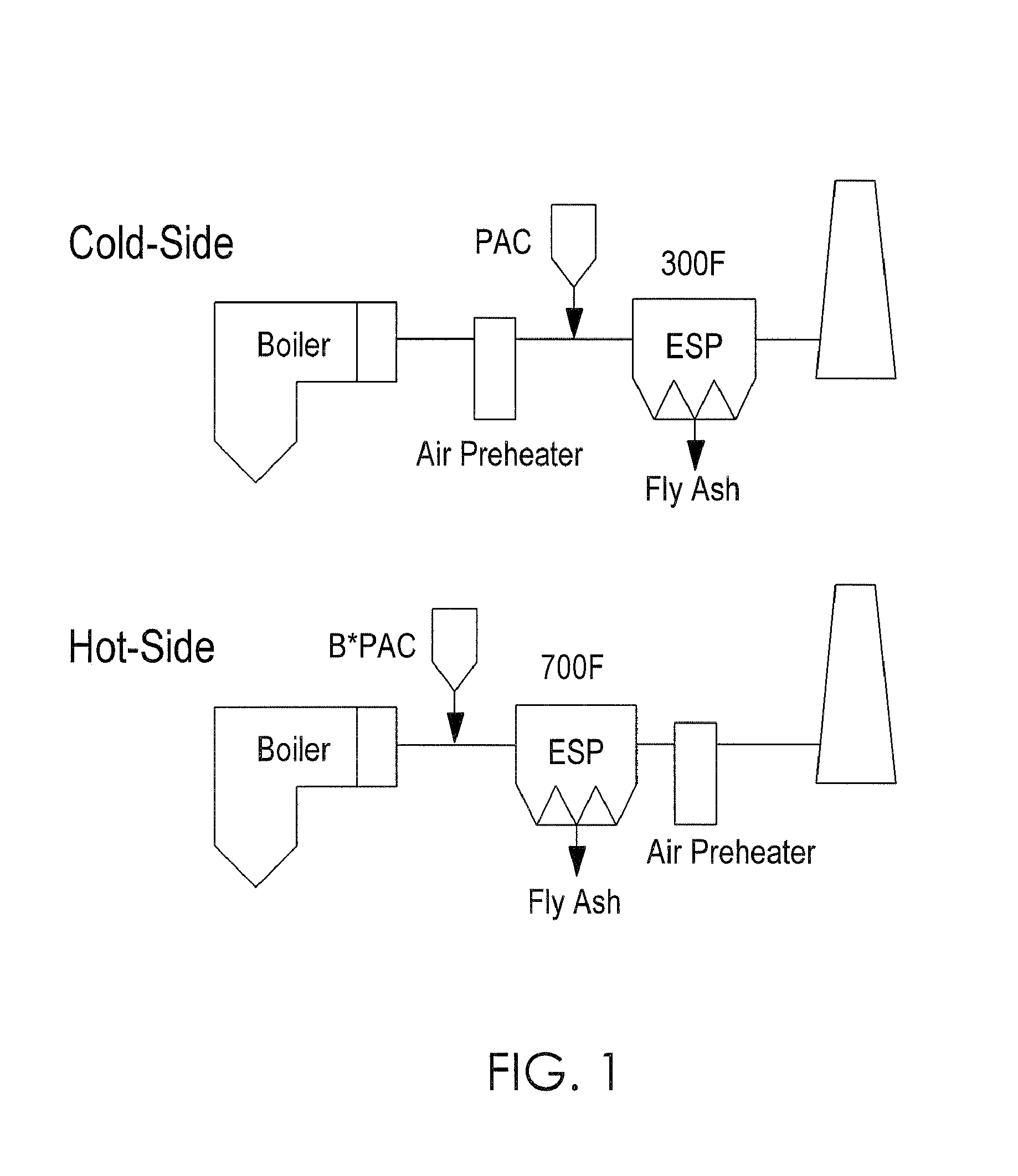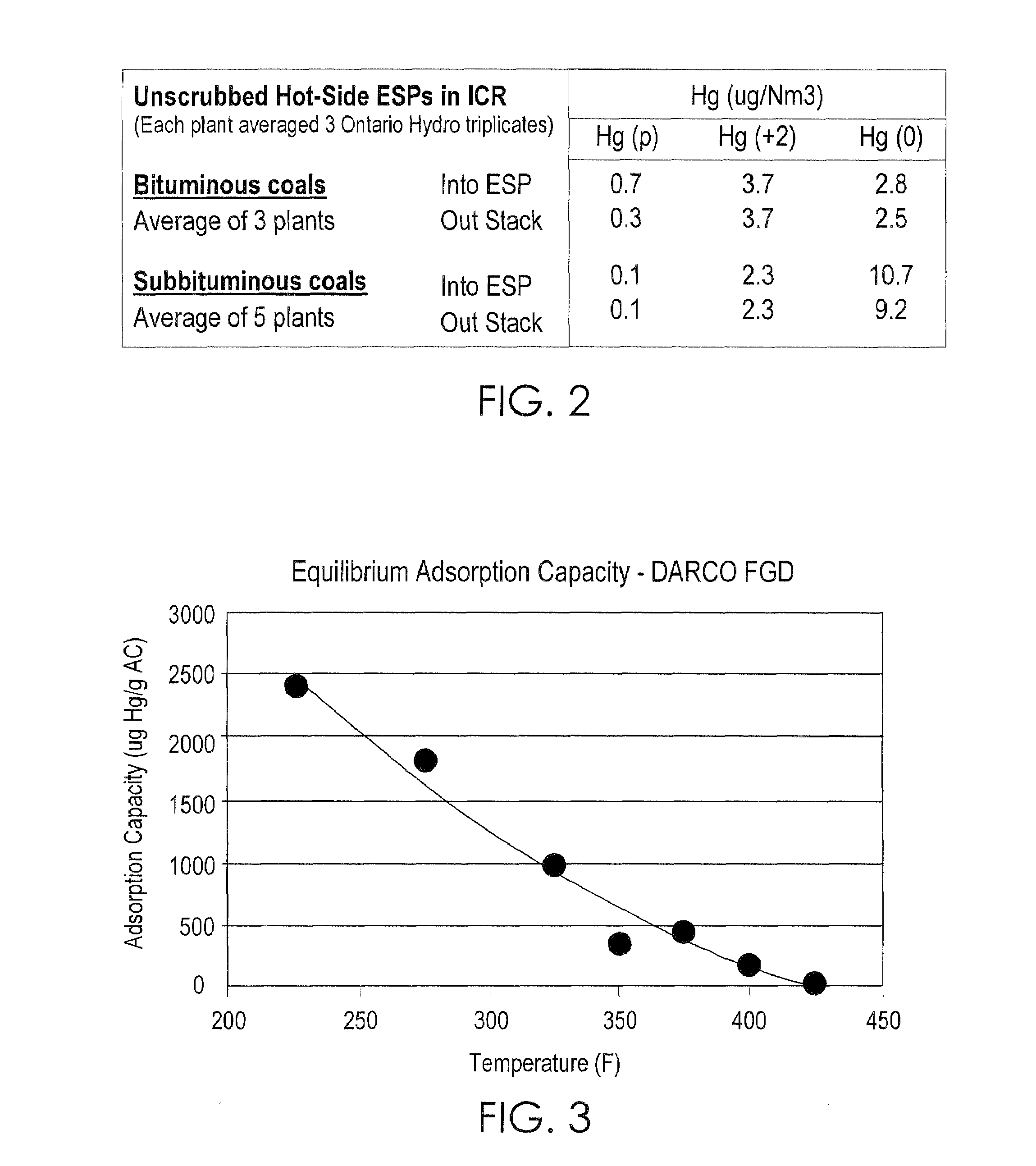Methods and sorbents for utilizing a hot-side electrostatic precipitator for removal of mercury from combustion gases
a technology of hot-side electrostatic precipitator and mercury, which is applied in the direction of emission prevention, separation processes, lighting and heating apparatus, etc., can solve the problems of difficult capture and isolating of mercury, high degree of mercury species, and high difficulty in capturing and isolating mercury. , to achieve the effect of rapidly removing the captured fly ash from the system
- Summary
- Abstract
- Description
- Claims
- Application Information
AI Technical Summary
Benefits of technology
Problems solved by technology
Method used
Image
Examples
example 1
Comparative Example
[0039]This first full-scale mercury sorbent injection test was conducted at 365° C. (690° F.). In this test, shown in FIG. 4, flue-gas mercury concentrations at the outlet of the hot-side ESP were very close to those at the inlet, indicating little to no mercury removal. The mercury emissions dropped immediately upon the injection of a brominated PAC derived from bituminous coal (10:00), but the emissions recovered very quickly to near the starting mercury level. Increasing the sorbent injection rate (12:00) improved the mercury removal momentarily, but again the emissions quickly recovered to their original level.
[0040]When the sorbent was turned off (17:00), the outlet mercury concentration surprisingly spiked, with significantly more mercury leaving the ESP for a period than entering. Then the inlet and outlet levels stabilized and again matched. Overall, the net areas under the inlet and outlet curves were the same. Interestingly, from this odd behavior it can...
example 2
[0041]The invention was then demonstrated on the same hot-side ESP at essentially the same high temperatures with the same carbonaceous mercury sorbents at similar or lower injection rates. See FIG. 5. By minimizing mercury re-emission, net mercury reductions with a hot-side ESP were achieved.
[0042]To solve the newly-identified mercury re-emission problem with hot-side ESPs, the operation of the ESP was modified to minimize the time that the sorbent remained at elevated temperature and exposed to flue gas. This was done by increasing the plate rapping rate to the maximum permitted, in order to remove the captured sorbent more rapidly from the ESP collection plates, and by running the fly-ash-removal system continuously in order to pull the fly ash containing the sorbent from the high temperature environment in the ESP hoppers as quickly as possible. As described in FIG. 5, the brominated PAC injection was turned on at 11:00, and off at 12:00, then on again at 12:30, and off again at...
example 3
[0043]Tests were also conducted with minimized sorbent residence times at somewhat lower ESP operating temperatures. As illustrated in FIG. 6, in a hot-side ESP at 280° C. (530° F.) a mercury removal rate of 80% in the stack outlet Hg was achieved. A proof of successful capture of mercury is to find the mercury in the fly ash. The mercury content of the baseline fly ash prior to sorbent injection was nearly zero. The mercury content of the fly ash from the test run with sorbent injection at 6 pounds-per-million-actual-cubic feet-of-flue-gas (lb / MMacf) was several hundred parts per billion, supporting the measured mercury removal rate. See FIG. 7.
PUM
| Property | Measurement | Unit |
|---|---|---|
| Temperature | aaaaa | aaaaa |
| Fraction | aaaaa | aaaaa |
Abstract
Description
Claims
Application Information
 Login to View More
Login to View More - R&D
- Intellectual Property
- Life Sciences
- Materials
- Tech Scout
- Unparalleled Data Quality
- Higher Quality Content
- 60% Fewer Hallucinations
Browse by: Latest US Patents, China's latest patents, Technical Efficacy Thesaurus, Application Domain, Technology Topic, Popular Technical Reports.
© 2025 PatSnap. All rights reserved.Legal|Privacy policy|Modern Slavery Act Transparency Statement|Sitemap|About US| Contact US: help@patsnap.com



